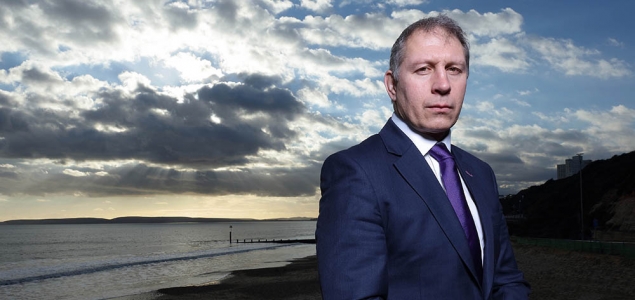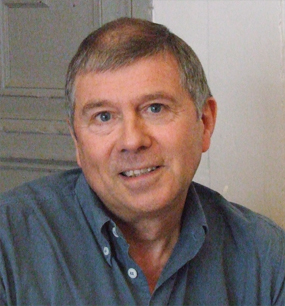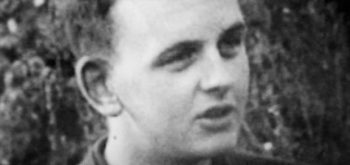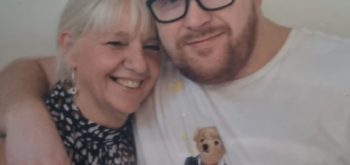In July and August, ITV gave the former Thames Valley Police officer, Mark Williams-Thomas, an astonishing transmission time of four hours to conduct an inquiry into the case of Russell Causley, whose wife Carole disappeared in 1985. Well, it was the summer holidays, the media’s silly season.
Causley was convicted of his wife’s murder in 1996 and again in 2004. Despite the apparent double resolution of the case, there was simply no evidence about what had actually happened. So: enter MWT, self-styled ‘Investigator’.
‘In all my years as an investigator, I’ve never had a case like this’, MWT informs viewers. ‘After thirty years, I need to find out what really did happen to Carole Packham.
‘I’m starting my investigation with an open mind.’
In a documentary series characterised throughout by half-truths, evasions and disingenuousness, this would turn out to be the biggest lie of all.
 The Investigator – A British Crime Story was transmitted on ITV during July-August 2016 – you can watch it here.
The Investigator – A British Crime Story was transmitted on ITV during July-August 2016 – you can watch it here.
You can read David Rose’s review of Bob Woffinden’s new book The Nicholas Cases on the Justice Gap here.
If only the complacency [that British justice is the best in the world] was well-founded. As Bob Woffinden shows in this new, essential book, nothing could be further from the truth, and if anything, in the wake of swingeing legal aid cuts, the situation is getting worse, not better.’
David Rose
Russell Causley, an independent businessman, who frequently lived beyond his means, tried to fake his own death in 1993. Anthony Hackett-Jones, Causley’s solicitor, hired a 40-foot yacht and, together with Causley’s partner, Patricia, and another woman, sailed to St Peter Port, Guernsey. They then ostensibly set out to return late in the evening, before putting out a distress call that there was a man overboard.
No one was taken in for very long: on the one hand, the sea rescue services could find no sign of a body; on the other, an examination of passenger manifests revealed that someone using the surname Russell had bought a one-way ticket on a late ferry back to the mainland.
A life insurance claim for £800,000 was submitted within days, but the insurance investigator (one can’t help thinking of Edward G Robinson in Double Indemnity) was already on the case. The guilty parties were traced to Brighton and then put on trial. Causley was given a two-year prison term; Patricia’s sentence was suspended. As a legal professional, Hackett-Jones, who had pleaded not guilty, would have received a longer sentence in any event; he was jailed for three years. (No action was taken against the other woman.)
This ill-starred episode turned out to be doubly disastrous for Causley.

Carole Packman who disappeared in 1985
In the 1980s, as Russell Packham, he lived with his wife Carole and daughter Samantha in Bournemouth. In 1984, Patricia – or Trisha – Causley sold her flat, giving the proceeds to Russell and Carole and moved in with them, partly to help to look after Samantha.
She and Russell were already having an affair, and Carole was probably having extra-marital affairs as well. A guest at one of the Packhams’ dinner-parties, which could potentially end in wife-swapping, commented, ‘I wouldn’t have said Carole was an unwilling partner.’
She walked out, or disappeared, on 14 June 1985, leaving behind her wedding ring and a note saying simply: ‘I’ve had enough, I’m leaving, I’m not coming back.’
Two months later the family reported her as missing. Dorset police launched a brief inquiry and put out press releases. A woman then walked into a local police station, identifying herself as Carole and saying that she was safe and well. The file was closed.
Now, in the wake of the insurance fraud convictions, the police took a renewed interest into what had happened to Carole a decade earlier. The upshot was that Russell Causley (as he now was, having taken Trisha’s surname in 1989) was convicted of murder.
For any investigator going back over all this ground, there was an obvious first question: if Causley had indeed killed his wife, it would mean that his first crime had been the perfect murder; and his second had been an insurance fraud of such laughable incompetence that it could have been picked apart by schoolchildren.
A no point, however, did MWT consider this fundamental disconnect.
*
The next matter that MWT did not pursue was the handwriting on the note. Was it Carole’s? It is a key evidential point and yet MWT maintained complete silence about it. At the time, it seems, no one raised any concerns. As such, it is one of the many potential defence points that MWT seeks to brush under the carpet.
MWT researched what had happened to the family in the years following Carole’s disappearance. He discovered that Causley and Trisha worked in the aerospace industry in Montreal – as, indeed, Causley had previously done with Carole. So they were known in the ex-pat community there. It must been someone from that community who, after a few weeks, alerted the immigration authorities to the fact that Trisha was using Carole’s work permit. As a result, they had to leave the country and return to the UK.
At this juncture, MWT asks the viewers rhetorically: ‘Was he doing this to lay a paper trail of Carole still being alive?’
Fairly obviously, the answer to this daft question is, No. If Causley had wanted to do that, he could have found some other less dangerous way. Here, the ruse was almost bound to fail (as indeed it did) because their colleagues were fully aware that Trisha and Carole were two different people. In reality, one imagines that it was simply more convenient for Trisha to use an existing work permit rather than to go through the hassle of applying for a fresh one (and also run the risk of being refused).
MWT further established that Trisha had impersonated Carole on a visit to a solicitor’s office in order to get her name removed from the title deeds of the Bournemouth house. It was straightforward to unpick this deception; a handwriting expert could tell almost instantly that the signatures did not match.
This was a significant piece of work by MWT, but he failed to make its import clear to viewers. MWT had spoken to local officers about Carole’s disappearance. They all asserted that they’d made the usual thorough inquiries to establish her whereabouts. It was after drawing blanks at every turn that they began to conclude firstly that she was dead and secondly that Causley had murdered her.
We all know the golden rule of investigations (follow the money) and so the fact that the police inquiries into Carole’s disappearance had failed to uncover the title deeds scam merely showed how inept those inquiries must have been.
*
There are, in fact, three “disappeared wives” cases. They are all drawn from a relatively small geographical area of the south-west. This may indicate merely that the Crown Prosecution Service in these parts is more cavalier in its prosecutions. The other cases are those of John Allen, who sadly died in prison last year, not having had the chance to fulfil his last wish of establishing his innocence, and Glyn Razzell.
I narrated the Razzell case in some detail in The Nicholas Cases and there I make exactly the same point as applies in the Causley case: that although the police claimed to have made strenuous attempts to locate the missing person, in reality those were the most half-hearted inquiries.
Accordingly, the foundation of the prosecution case in each instance – that because of the exhaustive nature of the police inquires, we can say with certainty that the woman must be dead – is simply bogus.
This leads on to a point of huge significance – which is, of course, that when police did try to locate Carole, they succeeded: she went into a police station.
This is a highly inconvenient piece of information for MWT, so how does he deal with it?
‘All it took’, he tells viewers, ‘is for one person to walk into a police station and say she is Carole. No checks made and no questions asked.’
We have already learned both that the officer who dealt with this woman has since died and also that all the relevant files have since been destroyed.
So when MWT blithely says, No checks made and no questions asked – how can he know that? Logically, he can’t.
After all, the officer may indeed have asked a couple of questions to check the woman’s identity, and may also checked with the photograph on the missing person’s file.
Trisha, a natural redhead, did indeed go into a solicitor’s office in what she described as a cheap, blonde wig and pretend to be Carole.
MWT’s inference is obviously that Trisha, or someone, must have impersonated Carole on this occasion also. Yet while Trisha may have felt confident in impersonating Carole in a provincial solicitor’s office, here the circumstances were entirely different.
An impersonator walking into a police station would have had no idea of how thorough the checks were going to be. Officers might well have spent time comparing the file photograph with the actual person. The wearing of a wig may well have been quickly uncovered, and the impersonator unmasked.
Then the consequences could have been disastrous. The impersonator would suffer immediate detention followed by a possible prison sentence. Much more seriously, however, if this was indeed a ploy to pretend that a deceased Carole was actually still alive, then police would be driven to the conclusion that she had been murdered and an investigation would ensue. Such subterfuge could have been so seriously counter-productive that I do not believe anyone would contemplate it.
The key point is not whether or not checks in the police station were made; it is the foreknowledge of a potential impersonator of the likelihood that checks would be made.
Obviously, police witnesses at the subsequent trials would wish to downplay the significance of this evidence, highly favourable to the defence as it is. As with all evidence, it is important to examine the contemporary evidence – as it was viewed at the actual time, and not as it was reinterpreted in later years in the light of what was then thought to be known.
This relatively minor episode becomes more bewildering still, because MWT suddenly says, ‘I’ve established that the woman who spoke to police took a child of a similar age to Sam with her’. He repeats this assertion, saying, ‘I also know that when that person walked in there was a child with them’.
So where has this come from?
It is, at the least, journalistically dishonest. It is unprofessional to put on screen what is asserted to be key evidence while withholding its provenance from the audience. Indeed, it is because we have no idea where it comes from that many would conclude that MWT has just made it up. As before, the same background circumstances apply: the officer has died, the files have been destroyed.
So an analysis of this relatively small area of the case highlights MWT’s style and approach. It is actually a massively important defence point. MWT cannot undermine it so he resorts to unsourced claims (‘I’ve established…’, ‘I also know…’) hoping that viewers won’t notice such journalistic deceptions.
In terms of the case itself, the only point that matters is that that person could have Carole, and that at the time the police were satisfied, by whatever means, that it was Carole. That alone should have been sufficient to secure Causley an acquittal.
*
By this stage, viewers would surely have been wondering what on earth was the actual evidence on which Causley was convicted. Although The Investigator – A British Crime Story is a bloated and relentlessly repetitive series, MWT finds almost no time to dwell on the evidence that sent Causley to prison to life.
In fact, this is merely another of the elements of dishonesty that characterise the series. Had MWT fully analysed the Crown’s courtroom evidence, then viewers would have realised that the case against Causley at trial was essentially non-existent.
Basically, the trial evidence consisted of the evidence of Samantha, who had been turned wholly against her father by then but who, realistically, could give no evidence of murder; and the evidence of three jailhouse snitches.
Samantha told MWT that, after running away from home in the wake of her mother’s disappearance, she ‘made a statement against my father’. However, he then arrived and coerced her into retracting the statement and making a fresh one. As is usual, MWT provides no supporting evidence at all for this; perhaps there is none. Again, one yearns for information about the actual contemporary evidence, not the evidence as it may have been reshaped in subsequent years.
Jailhouse snitch testimony, when a prisoner claims that another has “confessed” to him, is certainly admissible evidence, but that does not mean that it is acceptable evidence. On the contrary, it is morally repugnant. All prisoners are vulnerable, and a number may perceive advantages and benefits from giving evidence that assists the authorities.
Nevertheless, the jailhouse snitch can help to pull the wool over the eyes of less sophisticated juries. The prosecution may use the evidence of a jailhouse snitch to try to top up a weak court case; sometimes, as in the case of Gordon Park, also described in The Nicholas Cases, there are two jailhouse snitches; to the initiated, that’s a clear sign that the case really is bogus.

Samantha Gillingham, Carole Packman’s daughter
Before Causley, I’d never heard of three being used in a case before. From this perspective alone, one can tell that this prosecution case was rotten to the core. Almost inevitably, the evidence of each was at odds with that of the others (one stated that Causley had hacked his wife to death, another that he’d put her in an acid bath, and another that two others had taken away the corpse).
Jailhouse snitch represents a high water mark of prosecution disingenuousness. Prosecutors will know that it has in all probability been obtained by inducements of various kinds (it has never occurred to me that they actually believe it themselves), but will use it when it suits. However, should evidence of a similar nature be available for the defence, then the Crown immediately protest: he’s a convicted man, no one can believe him.
Causley was convicted at Winchester in 1996. His conviction was then quashed at the Court of Appeal in 2003, and a retrial was ordered. In The Nicholas Cases I argue that, in fairness, retrials should take place at the Old Bailey in London. Causley was retried at Exeter. It is 67 miles from Winchester to London and almost twice that distance to Exeter; but the authorities would have wanted an enfeebled case such as this to be heard in prosecution-friendly courts like Winchester and Exeter. Had had he been retried in London, I have no doubt that he would have been acquitted.
On neither occasion did he give evidence himself despite, as I understand it, wanting to. I can, however, appreciate that defence lawyers recognised that Causley, with an abrasive personality and a sharp manner, was not ideal witness-box material. Nor would they have wanted him to be cross-examined about his domestic arrangements in front of the socially conservative juries of the south-west. Again, had the retrial been held in London, I suspect he would have given evidence himself.
Having neglected to consider the trial evidence, MWT instead directs his attentions towards finding a body, or at least some remains. At one point, he has a remarkable conversation with another former police officer:
‘We looked at various places, storm drains’, says the former Dorset police officer. ‘He could have dismembered her and scattered her remains. It’s either that or he’s disposed of her by burning.’
‘Disposal of body by cutting her up, potentially burning the body’, adds MWT, ‘I think both of those have got to be really strong possibilities.’
Subsequently, MWT tells his viewers, ‘I have no doubt, absolutely no doubt, that she died here, she was murdered in this house’.
This is semi-hysterical nonsense for sure, but MWT presses ahead with his investigation. Having brought in equipment to determine the hot spots where burning has occurred in the past, he brings in an osteo-archaeologist and her team to dig up the garden of the Bournemouth house (I do hope that the current occupants were suitably recompensed by ITV) in the hope of finding some of Carole’s remains.
Naturally, this seemed an exercise in futility to vie with Peter Cook’s efforts to teach ravens to fly underwater, and the osteo-archaeologist duly confirmed that their intensive investigations of the garden soil had yielded only animal bone. No human bone at all.
‘This doesn’t mean he didn’t murder her,’ MWT quickly tells the viewers.
The criminal justice system is predicated on the assessment of evidence. That’s the warp and weft; there is nothing without evidence. Here, in effect, MWT is glibly saying that the absence of evidence is immaterial – we know he’s guilty anyway.
This is a second major prosecution deceit: the idea that if an area of investigation doesn’t provide evidence for the Crown, then it somehow falls into a category of non-evidence. In fact, this is all defence evidence, and it is very powerful defence evidence.
Disposing of a body is not easy. Clearly, Causley did not have an acid bath on site. Dismembering or burning the body are, indeed, logical possibilities – but each may well leave behind tell-tale evidence. In this case, there emphatically is none.
The house was not searched by forensic officers until almost a decade later, but it should be remembered that in the Lynette White murder case in Cardiff, forensics officers were able to find incriminating DNA evidence in the room where she was murdered more than a decade later.
Alternatively, had the body been burned, then it is certainly possible that some material would have been left behind – and yet, having conducted the most exhaustive search possible, MWT found nothing at all.
So he cannot glibly say that Causley might still have murdered her. The only point is that Causley’s case was always very strong, and, albeit inadvertently, MWT has actually made it stronger.
Another point needs to be made here. The Dorset police officer points out to MWT, ‘[Causley] had to do something with the body quickly because he still had Sam in the house’.
Once again, key information is being withheld from the viewers. This remark should actually have been: ‘he had to do something with the body quickly because he still had Sam and Trisha in the house’.
When this information is accurately given, it puts everything into a very different context. It is possible (even if highly unlikely) that Causley might have been able to conceal her mother’s remains from his teenage daughter. It is absurd to imagine that he could also conceal them from Trisha.
Given their mindset, MWT and the other former police officers assume that, because Trisha had colluded on the fraud, then she would also collude on the murder. Of course, this does not follow at all; they are wholly different categories of criminality. The idea that Trisha would have simply acquiesced in Carole’s murder seems ludicrous. If it had happened, then she would surely have been sickened by it and would not have stood by him (as she did) for the next 20 years.
The upshot of this (although it is another inescapable feature of the case that MWT ignores) is that Causley would have had scant opportunity to dispose of a body.
*
So, there is the inevitable question: what has happened to Carole Packham? Well, in the first place, it shouldn’t matter a great deal. There’s no evidence that she’s dead, and there’s an end to it.
The evidence of Brian and Shirley Tizzard, the next-door neighbours, is compelling. They are, after all, independent witnesses who knew her well and whom she visited the day before she disappeared.
‘She told me she was thinking of leaving’, commented Brian Tizzard. ‘She seemed quite calm, quite determined on the path she wanted to take, she wanted to move on with her life.
‘She was a very competent lady and, had she put her mind to it, she probably could have disappeared.’
I was intrigued by the comments of Shirley Tizzard. Asked by MWT what she thought had happened, she responded, ‘Do you want me to be honest? I still have a question-mark in my mind. Did she get away?’
That initial response – do you want me to be honest? – suggests a natural reluctance to challenge the official verdict, and yet she and her husband have the integrity to overcome their inhibitions and give their clear impressions. I’m sure they’re right. Meanwhile, this is more inconvenient evidence for MWT so he simply skates over it.
Had this documentary series been an honest one, then it would have included some general information about missing people in the UK. Approximately 250,000 people go missing each year. Many of those are never found. Creating a new identity may not be difficult. For ‘a very competent lady’, a combination of some fresh paperwork and a trip to the hairdresser’s could suffice.
Should the question be asked, but why hasn’t she come forward? The answer, of course, is that she has. Knowing that the police have disregarded her evidence and pursued a different course entirely might have left her feeling apprehensive about coming forward again. Now, she might fear a perverting the course of justice charge (even though I don’t see how she could be guilty of that). She might have moved abroad and be oblivious of these events; she might in the meantime have died of natural causes.
The point is that all of these are realistic possibilities. If someone disappears, then murder is the least likely explanation of their disappearance not, as some police officers appear to assume, the most likely.
MWT spent almost two parts of this series trying to establish the truth of a confession written by Causley – while concealing from the viewers the key point that Causley had disavowed the confession.
The confession itself did not surprise me. There are three considerations here. The first is that, after 20 years in prison, a prisoner’s mental faculties may understandably deteriorate. The second is the constant pressure they are under to confess to their ‘crime’. They suffer psychological torment, being told again and again that, if they do not confess, they will never be released. It is not surprising that some crack. The third point is that Causley’s mental equilibrium would undoubtedly have been shattered when, in August 2014, Trisha broke off her relationship with him. This finally pushed him over the edge.
‘I would give anything’, he wrote, ‘even now to hear Trish’s voice again, just one more time.’
By the end of the series, MWT has highlighted merely the opposite of what he intended to establish – not that he has the intellectual courage to concede this. His year-long investigation has exposed the absence of any evidence that Causley murdered his wife and, by extension, the intrinsic weaknesses of the UK criminal justice system. Causley has now served 20 years in prison for a murder for which there is simply no bona fide evidence whatever.
This series could well be used by university media departments as a study in how television documentaries seek to mislead and conceal. Had it been attempted in the days when scrupulous standards still applied at ITV, it would have been deemed untransmittable and junked.
Bob Woffinden is a former ITV documentaries producer. The Nicholas Cases, which contains chapters on the Glyn Razzell and Gordon Park cases, is available on Amazon and from bookshops







